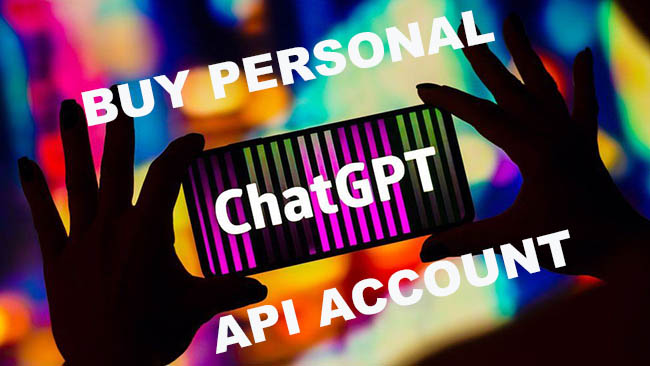Learn how to use the GPT-3 Python API for chat applications. Explore the step-by-step guide to integrate the OpenAI ChatGPT API into your Python projects and create interactive chatbots effortlessly.
Step-by-Step Guide: How to Use ChatGPT Python API for Seamless Conversational AI Integration
ChatGPT is a powerful language model developed by OpenAI that can generate human-like text responses in a conversational manner. With its Python API, you can easily integrate ChatGPT into your own applications, allowing you to create interactive chatbots, virtual assistants, or any other conversational AI system.
In this step-by-step guide, we will walk you through the process of using the ChatGPT Python API to build a seamless conversational AI integration. Whether you are a developer, a data scientist, or just an AI enthusiast, this guide will provide you with all the information you need to get started.
First, we will show you how to set up your development environment and install the necessary dependencies. Then, we will guide you through the process of creating an OpenAI account, obtaining an API key, and configuring your API client. Next, we will demonstrate how to use the Python API to make requests to the ChatGPT model and receive responses. Finally, we will provide you with some tips and best practices to improve the performance and reliability of your conversational AI system.
By the end of this guide, you will have a solid understanding of how to use the ChatGPT Python API to integrate conversational AI capabilities into your own applications. Whether you want to build a chatbot, a customer support assistant, or any other type of conversational AI system, this guide will help you get started on the right track.
Why Use ChatGPT Python API for Conversational AI Integration?
ChatGPT Python API is a powerful tool for seamless integration of conversational AI into your applications. Here are some reasons why you should consider using it:
- Easy setup: The ChatGPT Python API provides a simple and straightforward way to integrate conversational AI into your Python projects. With just a few lines of code, you can start using ChatGPT to generate human-like responses.
- Real-time interactions: Unlike traditional chatbot frameworks that require manual rule-based programming, ChatGPT offers a more dynamic and interactive approach. You can have back-and-forth conversations with the model in real-time, making it ideal for applications that require continuous user input.
- Flexible conversation context: ChatGPT allows you to maintain context across multiple messages, enabling more coherent and context-aware responses. You can pass in previous messages as input to provide necessary context, making the conversation flow more naturally.
- Improved language understanding: OpenAI has fine-tuned ChatGPT on a large dataset that contains demonstrations of correct behavior as well as comparisons to rank different responses. This training process helps the model understand and generate more accurate and meaningful responses.
- Enhanced customizability: With the ChatGPT Python API, you can easily customize the behavior of the model according to your specific requirements. You can provide system-level instructions to guide the model’s responses or use temperature and max tokens settings to control the level of creativity.
- Wide range of applications: ChatGPT can be used in various applications, including virtual assistants, customer support bots, content generation, brainstorming tools, and more. Its versatility and flexibility make it suitable for a wide range of conversational AI use cases.
In conclusion, the ChatGPT Python API offers a user-friendly and powerful solution for integrating conversational AI into your applications. Its simplicity, real-time interactions, context handling, improved language understanding, customizability, and versatility make it a valuable tool for building conversational agents.
Step 1: Setting Up Your Python Environment
Before you can start using the ChatGPT Python API for seamless conversational AI integration, you need to set up your Python environment. This involves installing the required dependencies and libraries.
1. Install Python
If you don’t have Python installed on your system, you’ll need to install it first. You can download the latest version of Python from the official Python website (https://www.python.org/downloads) and follow the installation instructions specific to your operating system.
2. Create a Virtual Environment (Optional)
It is generally recommended to create a virtual environment for your Python projects to keep your dependencies isolated. This allows you to have separate environments for different projects and avoids conflicts between packages.
To create a virtual environment, open a terminal or command prompt and run the following command:
python -m venv myenv
This will create a new virtual environment named „myenv” in the current directory.
To activate the virtual environment, run the appropriate command for your operating system:
- For Windows:
- For macOS and Linux:
myenv\Scripts\activate
source myenv/bin/activate
3. Install Required Libraries
Now that you have your Python environment set up, you need to install the required libraries. The main library you’ll be using is OpenAI’s „openai” library, which provides the ChatGPT API functionality.
To install the required libraries, run the following command:
pip install openai
This will install the „openai” library along with any other dependencies it requires.
4. Obtain OpenAI API Key
In order to use the ChatGPT API, you’ll need to obtain an OpenAI API key. You can sign up for an API key on the OpenAI website (https://www.openai.com) and follow the instructions to get your API key.
Once you have your API key, you’ll need to set it as an environment variable. The exact method for setting environment variables depends on your operating system, but generally, you can set it using the following command:
export OPENAI_API_KEY=your-api-key
Replace „your-api-key” with your actual API key.
5. Verify Installation
To verify that everything is set up correctly, you can run a simple Python script that imports the „openai” library and checks if there are any errors:
import openai
print(openai.__version__)
print(„Setup complete!”)
If you don’t see any errors and the version of the „openai” library is printed, then your Python environment is set up correctly.
Congratulations! You have successfully set up your Python environment for using the ChatGPT Python API.
Step 2: Installing the Required Libraries
In order to use the ChatGPT Python API, you will need to install the required libraries. These libraries will allow you to interact with the ChatGPT model and integrate it seamlessly into your conversational AI applications.
1. OpenAI Python Library
The first library you need to install is the OpenAI Python library. This library provides a simple interface for making requests to the ChatGPT API.
To install the OpenAI Python library, you can use pip, the Python package installer. Open your command line or terminal and enter the following command:
pip install openai
2. Other Required Libraries
There are a few other libraries that you will need to install to work with the ChatGPT Python API:
- numpy: A library for numerical operations in Python. Install with:
- dotenv: A library for loading environment variables from a .env file. Install with:
pip install numpy
pip install python-dotenv
These libraries are commonly used in Python projects and should be familiar to most developers.
3. API Key
In order to use the ChatGPT API, you will need an API key. You can obtain an API key from the OpenAI website. Once you have your API key, you can store it in a secure manner. One common way to store sensitive information like API keys is by using environment variables.
Using the dotenv library mentioned above, you can create a file called .env in your project directory and store your API key there. Make sure to add the .env file to your project’s .gitignore file to avoid committing it to version control.
The content of the .env file should look like this:
OPENAI_API_KEY=your-api-key
Replace your-api-key with your actual API key.
With the required libraries installed and the API key set up, you are now ready to use the ChatGPT Python API for seamless conversational AI integration.
Step 3: Authenticating and Initializing ChatGPT API
To start using the ChatGPT API, you need to authenticate and initialize it properly. This step ensures that you have the necessary credentials and set up the required environment for making API calls.
1. Set up OpenAI Account
If you haven’t done so already, sign up for an account on the OpenAI platform (https://www.openai.com). This will give you access to the necessary API key and other resources.
2. Install OpenAI Python Library
Make sure you have the OpenAI Python library installed. You can install it using pip:
pip install openai
3. Obtain API Key
Once you have an OpenAI account, navigate to the API Keys section of the platform. Generate a new API key if you don’t have one already.
Copy the generated API key, as you will need it to authenticate your requests.
4. Store API Key Securely
It is important to store your API key securely and not expose it in your code or version control. One recommended way is to store it as an environment variable on your system.
Set the environment variable with the following command (replace „YOUR_API_KEY” with your actual API key):
export OPENAI_API_KEY=YOUR_API_KEY
5. Initialize the ChatGPT API
Now you can initialize the ChatGPT API in your Python code. Import the OpenAI library and use the following code snippet:
import openai
openai.api_key = os.getenv(„OPENAI_API_KEY”)
Make sure to import the necessary libraries and modules, such as os in this case. Also, ensure that you have set up the environment variable correctly to access the API key.
With the API key set, you are now ready to make API calls to ChatGPT and interact with the model using the Python API.
Step 4: Sending Messages and Receiving Responses
Once you have created an instance of the ChatCompletion class and set up the conversation history, you can start sending messages and receiving responses. This step allows you to have a dynamic and interactive conversation with the ChatGPT model.
Sending Messages
- Use the append_message method of the ChatCompletion instance to send a message to the model.
- Pass the message as a string to the append_message method.
- You can include the role of the sender to provide context, such as „user” or „assistant”.
- Messages should be sent in chronological order to maintain the conversation flow.
- For example, you can send a user message with the following code: chat.append_message(„user”, „Hello, how are you?”)
Receiving Responses
- Use the get_next_response method of the ChatCompletion instance to retrieve the model’s response.
- The get_next_response method returns an object containing the role and message of the model’s response.
- Access the response message using the .message attribute of the returned object.
- For example, you can receive the model’s response with the following code: response = chat.get_next_response()
Continuing the Conversation
- You can continue the conversation by alternating between sending messages and receiving responses.
- Send a user message with the append_message method and receive a response with the get_next_response method.
- Repeat this process as many times as needed to have a back-and-forth conversation.
- Remember to send messages in the correct order to maintain the conversation flow.
- You can use loops or conditionals to control the conversation based on your desired logic.
By following these steps, you can easily send messages to the ChatGPT model and receive its responses, creating an engaging and interactive conversational AI experience.
Step 5: Handling Errors and Exceptions
When working with the ChatGPT Python API, it’s important to handle errors and exceptions gracefully to ensure smooth conversational AI integration. Here are some common scenarios and how to handle them:
1. API Rate Limits
The OpenAI API has rate limits to prevent abuse and ensure fair usage. If you exceed the rate limits, you will receive a 429 Too Many Requests response. To handle this, you can catch the exception and wait for the specified duration before making another request.
import time
try:
# Make API request
response = openai.Completion.create(…)
except openai.error.APIError as e:
if e.status == 429:
# Wait for the specified duration
time.sleep(int(e.response.headers[„Retry-After”]))
# Retry the request
response = openai.Completion.create(…)
else:
# Handle other API errors
handle_other_errors(e)
2. Input Validation
It’s important to validate user inputs before sending them to the API. This validation can include checking for empty or invalid inputs, limiting input length, and ensuring the input is in the expected format. By validating inputs, you can handle potential errors before making the API request.
def validate_input(user_input):
if not user_input:
raise ValueError(„Input cannot be empty.”)
if len(user_input) > 1000:
raise ValueError(„Input is too long.”)
# Additional validation logic
try:
validate_input(user_input)
response = openai.Completion.create(…)
except ValueError as e:
# Handle input validation errors
handle_input_validation_errors(e)
except openai.error.APIError as e:
# Handle other API errors
handle_other_errors(e)
3. Connection Errors
There may be cases where you encounter connection errors while making API requests. To handle such errors, you can catch the exception and retry the request after a delay.
import requests
import time
def make_api_request():
try:
response = requests.post(…)
response.raise_for_status() # Raise an exception for non-2xx status codes
return response.json()
except (requests.exceptions.RequestException, ValueError) as e:
# Handle connection errors and JSON decoding errors
handle_connection_errors(e)
# Retry the request after a delay
time.sleep(1)
return make_api_request()
response = make_api_request()
4. Handling Specific Errors
Some API responses may contain specific error messages or error codes that you can handle separately. These specific errors can provide more information about the issue, allowing you to provide better feedback or take appropriate actions.
try:
response = openai.Completion.create(…)
except openai.error.InvalidRequestError as e:
if e.error_code == „model_not_found”:
# Handle model not found error
handle_model_not_found_error(e)
elif e.error_code == „parameters_invalid”:
# Handle invalid parameters error
handle_invalid_parameters_error(e)
else:
# Handle other invalid request errors
handle_other_invalid_request_errors(e)
except openai.error.APIError as e:
# Handle other API errors
handle_other_errors(e)
By handling errors and exceptions effectively, you can ensure a more robust integration of the ChatGPT Python API into your conversational AI applications. Remember to provide clear error messages to users and handle different error scenarios appropriately.
Using the ChatGPT Python API: A Comprehensive Guide
What is ChatGPT Python API?
ChatGPT Python API is a tool that allows developers to integrate ChatGPT into their applications or services using Python programming language.
How can I use ChatGPT Python API?
To use ChatGPT Python API, you need to have OpenAI Python package installed. You can then make API calls with your OpenAI API key to interact with the ChatGPT model.
Can I customize the behavior of ChatGPT?
Yes, you can customize the behavior of ChatGPT by tweaking the parameters of the API call. For example, you can adjust the temperature parameter to control the randomness of the model’s responses.
Is it possible to have multi-turn conversations with ChatGPT?
Yes, you can have multi-turn conversations with ChatGPT using the Python API. You can send a list of messages as input, where each message has a 'role’ (either 'system’, 'user’, or 'assistant’) and 'content’ (the actual text).
What are some use cases for ChatGPT Python API?
Some use cases for ChatGPT Python API include: building chatbots, creating interactive fiction, providing assistance in applications, generating conversational agents for research purposes, and more.
Can I use ChatGPT Python API for free?
No, starting from March 1st, 2023, the ChatGPT Python API is not available for free in the OpenAI Playground or as part of the free subscription plan. You will need to have a paid subscription to use the ChatGPT Python API.
What should I do if I encounter issues or errors while using ChatGPT Python API?
If you encounter any issues or errors while using ChatGPT Python API, you can refer to the OpenAI API documentation for troubleshooting steps. You can also reach out to the OpenAI support team for assistance.
What is ChatGPT Python API?
ChatGPT Python API is an interface that allows developers to integrate OpenAI’s ChatGPT model into their own applications or systems. It provides a way to have dynamic and interactive conversations with the model, making it easy to create chatbots, virtual assistants, and other conversational AI applications.
How can I install the ChatGPT Python API?
To install the ChatGPT Python API, you can use pip, which is the package installer for Python. Run the following command in your terminal or command prompt: `pip install openai`. This will install the necessary package for interacting with the ChatGPT API.
Where whereby to actually purchase ChatGPT account? Inexpensive chatgpt OpenAI Registrations & Chatgpt Plus Profiles for Sale at https://accselling.com, discount rate, secure and quick shipment! On this marketplace, you can acquire ChatGPT Account and get admission to a neural network that can answer any query or engage in valuable discussions. Purchase a ChatGPT profile now and commence creating superior, engaging content seamlessly. Obtain access to the strength of AI language processing with ChatGPT. At this location you can acquire a private (one-handed) ChatGPT / DALL-E (OpenAI) registration at the best prices on the marketplace!


